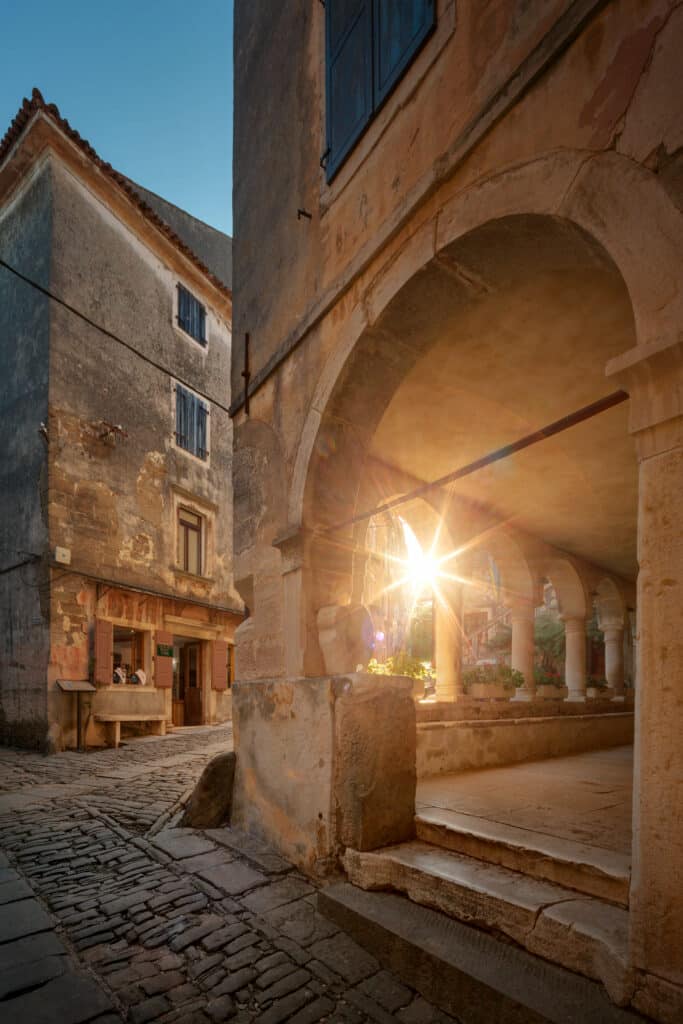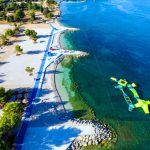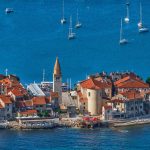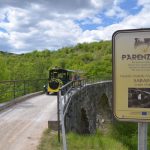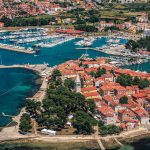Imagine an idyllic, but almost extinct town, rising from the dead by inviting artists to reside there and turn it into an art colony. And now let us tell you that it’s real and its name is Grožnjan.
- Welcome!
- How to get to Grožnjan and get around
- 4 things not to miss
- Where to stay?
- Where to eat?
- Top 4 day trips from Grožnjan
- 3 things you didn’t know about Grožnjan
Welcome!
The nearby Motovun might be the quintessential Istrian hilltop town, but Grožnjan is also well worth visiting. As is the case with many Istrian towns, it was settled during the Roman times, built under Venetian rule in Middle Ages, and well preserved up to today. The place was almost deserted after World War II, but in 1965 a group of artists decided to turn the town into an art colony, which it remains up to present. It’s a great accommodation spot for those who don’t need the sea, and it makes for a good base for exploring the hilly part of Istria.
How to get to Grožnjan and get around
Plane
Pula airport is the closest one – from there you will have to rent a car or get a private transfer, as there is no public transport to Grožnjan. The drive takes about an hour. The airports of Rijeka and Trieste are one and a half-hour drive away – keep in mind that if coming from Italy, you will need to cross the border between Slovenia and Italy, which can be clogged during tourist season.
Road
If driving from Rijeka or Zagreb, best to exit Istrian “Y” motorway at Lupoglav, take road 44 to the roundabout near Bijele Zemlje, and then turn right onto road 21, from where you will turn to Grožnjan. If coming from Pula, Slovenia or Italy, exit the motorway at Buje, then take the road 300 passing through Buje and leading to Grožnjan. Another option if coming from Pula is road 21 – just be prepared for some steep curves just before Grožnjan.
Looking for a fast, reliable and trouble-free transfer to or from Grožnjan? Contact TC transfer partner Adriatic Transfers for your one-stop solution.
Grožnjan is a very small place so you can get around on foot. Having a car at your disposal is highly recommendable, as you will be able to explore much more of the area.
4 things not to miss in Grožnjan
Art
If you’re choosing to spend any time in Grožnjan, visiting its galleries is a must. The main one is called Fonticus, but it’s only one among many, as there are dozens of studios, ateliers and galleries, with exhibitions, festivals and workshops opening almost on a daily basis. Check out the list of galleries here.
Music lovers should keep in mind that Grožnjan is also the centre of the Croatian Music Youth organisation, which also organises a number of programmes in the town. The town also hosts an international jazz festival, called Jazz is Back BP, held in July – see their Facebook page for more info.
Parenzana
Grožnjan used to be a stop on a narrow-gauge railway running from Poreč (Parenzo in Italian, hence its name) to Trieste in Italy. It was built in 1902 and dismantled in 1935, but its many viaducts and tunnels were preserved, and today serve as a unique biking or hiking route. Check it out on the website.
Food and wine
The area around Grožnjan is famous for wine, as it’s the place where some of Istria’s best winemakers are based. In Momjan village, only 15 minutes away from Grožnjan by car, you will find Kozlović, Istria’s most renowned winemaker, whose state-of-the-art winery was even named one of 100 most beautiful wineries in the world. Momjan is also home to Kabola, an organic winery known for making wine in amphorae. For more of this wine, check out Clai, the pioneer of organic winemaking in Istria.
Inland Istria’s food is quite different from the coastal’s, which is seafood-oriented. If your things are rich soups, homemade pasta, and cured meat, you will love the local cuisine. The area is also famous for truffles. See the “Where to eat” entry for more info.
Another good idea is to visit Istria’s most famous craft brewery, San Servolo, located next to the nearby town of Buje.
The Momjan Castle
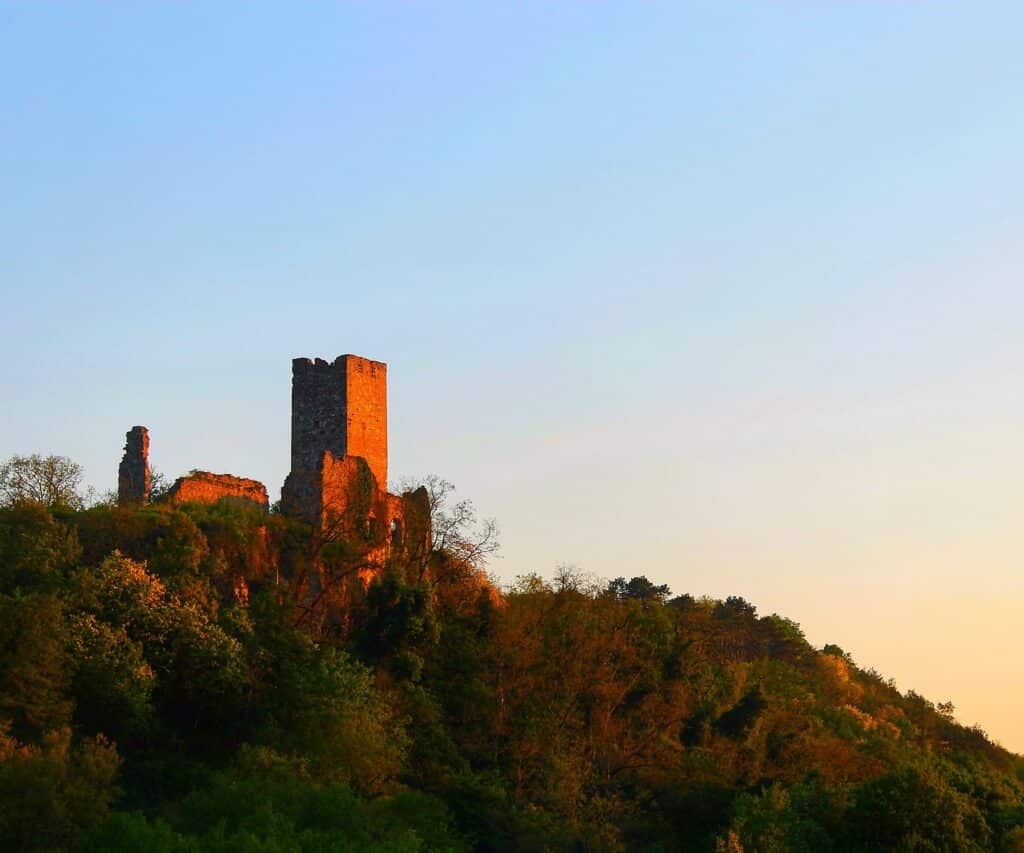
Apart from food and wine, this medieval fortress is another good reason to visit Momjan. A castle was first mentioned in the region in 1035. The current ruins can be traced back to the 13th century, and the well-known Rota family ruled over it for centuries. The castle was completely abandoned in 1835, so nowadays it’s in ruins, but it still makes for a romantic visit. Towering over Dragonja river, close to Kozlović winery, it also offers a great view.
Where to stay in Grožnjan
Grožnjan and its surroundings offer plenty of excellent opportunities for private accommodation. B&Bs, villas, and apartments abound in the area, and many are located in traditional stone houses in idyllic places, be it in Grožnjan itself or in the surrounding countryside. Svalina, Artegnana 1798, Smile, Ars Natura and San Vito are just some of the places worth mentioning in the old town, whereas Villa Torrecorta, Bolara 60, Martincici, Ponte Porton and San Canzian are the ones located just outside of Grožnjan.
Where to eat in Grožnjan
The places in Grožnjan are decent, but if you want to try truly great food, check out family farms (called “agroturizam” in Croatian) and konobas (taverns) in the surroundings of Grožnjan. Recommendable places are Mekiši in the village of the same name, Monticello in Završje, Dešković in Kostanjica, and Sinković in Momjan. The last two ones are wineries too. Great konobas in the area are Stari podrum in Most, Rino in Momjan, and Rondo in Buje. The last one is run by a great winemaker, Franković.
Top 4 day trips from Grožnjan
Motovun
Grožnjan’s more famous hilltop town cousin is located half an hour away by car. Like Grožnjan, it was built in medieval times under Venetian rule, and it’s the best-preserved old town in Istria. It’s worth visiting for its sights alone, but it also hosts one of Croatia’s most famous film festivals. And it’s the Croatian capital of truffles. One great idea is to join local truffle hunters on their hunts with dogs.
Pula
Staying in the countryside, you might wish for a bit of a city vibe, so visiting Pula is a good idea. A drive there takes about an hour by car. The city’s main attraction are the Roman remains found throughout it. And the Arena, one of the best-preserved colosseums in the world, is the star in that bunch! For a nice view of the city, climb its Kaštel fortress, and if in for a swim, check out Umbrella, Hawaii or Lungomare beaches.
Poreč
If staying in Istria, it would be a shame not to go for a swim, and Poreč, the most popular Istrian place alongside Rovinj, is known precisely for its beaches. The town itself is over 2000 years old and, founded as a Roman castrum, a military camp, it still preserves the camp’s main streets and square. Its special attraction is also Euphrasian basilica, a piece of early Byzantine art fine enough to be protected as a UNESCO World Heritage site. From Grožnjan it’ll take a 40-minute car ride to reach Poreč.
Osmize
If willing to drive a bit longer and cross the Croatian-Slovenian border (which can take a while during tourist season), you might wanna check out these establishments found around Trieste in Italy and Slovenia. They date from the 18th century, when the government of Maria Theresa, the only female ruler of the Habsburg dynasty, allowed the local farmers to sell their produce without the tax for eight days in a year. If you want to try homemade food and wine and imbibe local atmosphere, don’t miss them. There are over 50 of them in the area and each one is open at a different time of year, so you will surely find one. They are easily recognisable by an upturned branch hung in front of them. For the list of currently open ones, see their website.
3 things you didn’t know about Grožnjan
River port
Centuries ago, Grožnjan even had its port on the nearby Mirna, Istria’s biggest river. It was located next to the present-day intersection of roads 21 and 44 and called Ponte Porton. The port existed from Roman times, and it was in operation up to the times of Venetian rule. After that, the river’s unmaintained bed became shallow, making it unnavigable. A legend claims Jason and Argonauts sailed Mirna when returning home from Colchis.
Istrian exodus
Grožnjan used to be a predominantly Italian town until after World War 2, when most of its population, like most of Istria’s Italians, left communist Yugoslavia and settled in Italy. This led to the town almost dying out, but the great idea of turning it into an art colony saved it. Today, most of Grožnjan’s population is Italian-speaking, making it one of the most Italian places in Istria.
Fritule
Fritule are a popular dessert in Istria, a fried pastry, resembling donuts, but walnut-sized. Centuries ago, Grožnjan’s judges maintained a peculiar custom involving fritule. On the first day of Lent, they would have them made and distribute to inhabitants of Grožnjan, who, under threat of penalty, had to eat them. Do not worry, nowadays nobody will force you to eat them – although we doubt you would refuse.
More information
Grožnjan tourist board’s website:
To follow the latest news from Istria, check out the dedicated TCN page.

